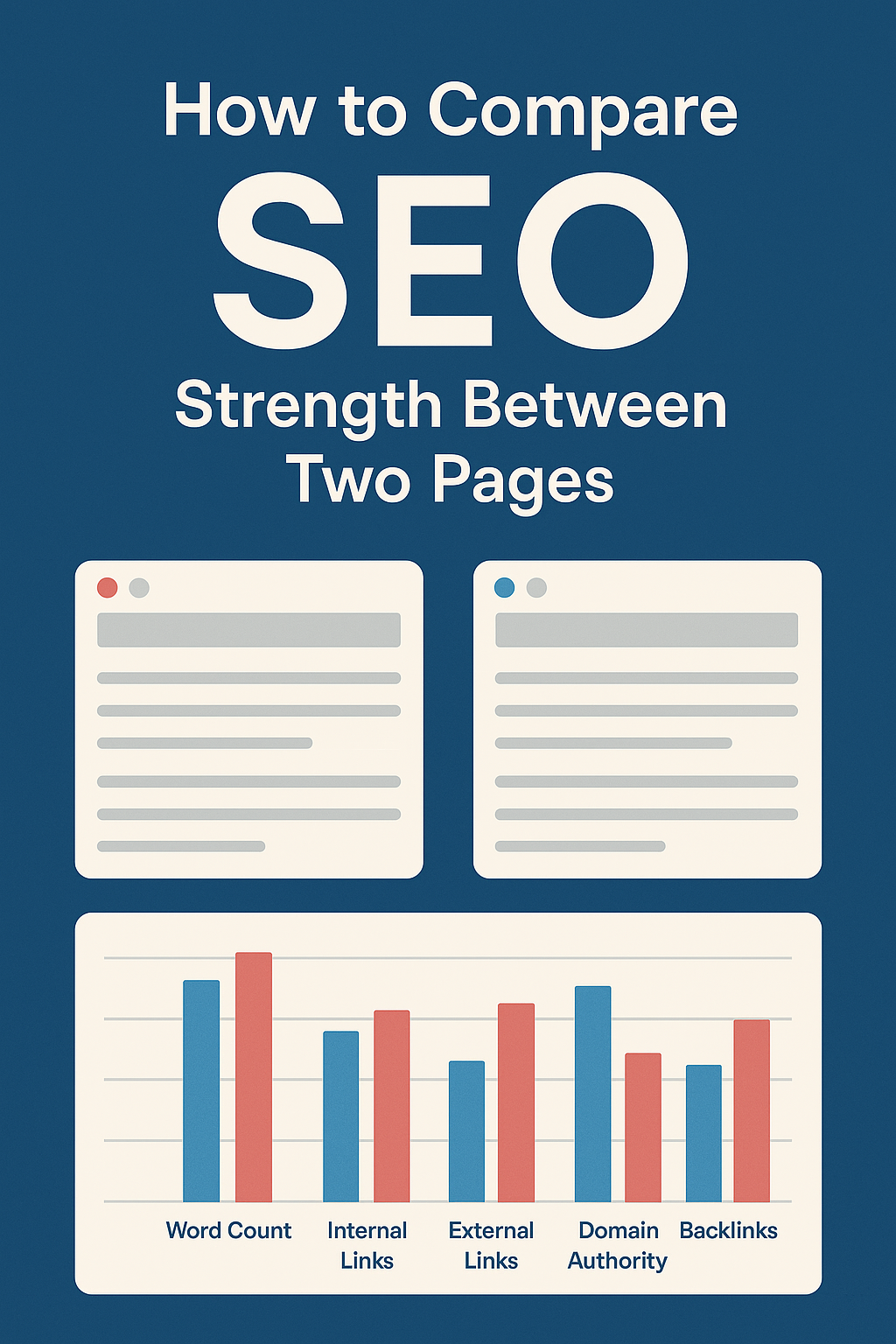🆚 How to Compare SEO Strength Between Two Pages (The Smart Way)

In the competitive world of digital marketing, understanding why one page outranks another can provide a significant edge. Whether comparing your own pages or analyzing a competitor, assessing SEO strength side-by-side is a powerful way to find ranking opportunities.
This guide explains exactly what to compare and how to make smarter content decisions using tools like CopyRanker’s Compare Tool.
🔍 Why Compare SEO Strength Between Pages?
Comparing URLs helps identify:
- 🔎 Why competitors may rank higher
- ✍️ Gaps or weaknesses in your page
- 🚀 Opportunities for content optimization
- 📈 Data-driven strategies to improve rankings
⚖️ What to Compare Between Two URLs
Focus on these essential on-page and off-page elements:
✅ 1. Title Tag & Meta Description
Check for keyword alignment, length, and clarity:
- Title limit: ~580px (~55–60 characters)
- Meta limit: ~920px (~150–160 characters)
💡 Too-long titles may get truncated, affecting click-through rate (CTR).
✅ 2. H1 Tag
Ensure each page has one clear H1 that includes the target keyword and aligns with the search intent.
✅ 3. Word Count
Check if the content covers the topic in depth — especially for informational queries where longer pages often rank better.
✅ 4. Top Keywords
Analyze the most frequently used terms to assess topic coverage and keyword relevance.
✅ 5. Internal & External Links
- Internal links enhance crawlability and distribute link equity
- External links signal trust when pointing to authoritative sources
✅ 6. Schema Markup
Structured data (like JSON-LD) helps search engines interpret and enhance your content in search.
✅ 7. Domain Authority & Backlinks
Off-page metrics matter:
- DA: A Moz score from 0–100
- Backlinks: How many sites link to the domain or page
✅ 8. Page Speed & Mobile Friendliness
Google prioritizes sites that load quickly and offer a smooth mobile experience.
🛠️ How to Compare Two URLs Instantly
Try the free CopyRanker URL Comparison Tool:
- Enter two URLs — one yours, one a competitor
- Click “Compare”
- Review the SEO scores and bar chart visual
- Adjust your content based on clear insights
📊 Common Use Cases
- Before & After Audits: Track SEO improvements after changes
- Competitor Analysis: Benchmark performance
- Client SEO Reports: Share side-by-side visual comparisons
🚀 Next Steps: Improve What You Find
After comparing, use CopyRanker’s AI Article Generator to act on your insights:
- Rewrite titles and metas
- Add missing content and keywords
- Structure your post to match winning formats
✅ Final Thoughts
SEO comparison isn’t guesswork — it’s a data-driven process. With the right metrics and tools, it's easier to make strategic updates that move your content higher in search rankings.
🧠 Tip: Always compare similar content types. A blog vs. a homepage is not a fair comparison.
Use the CopyRanker Compare Tool to uncover what makes top content rank — and optimize yours accordingly.
